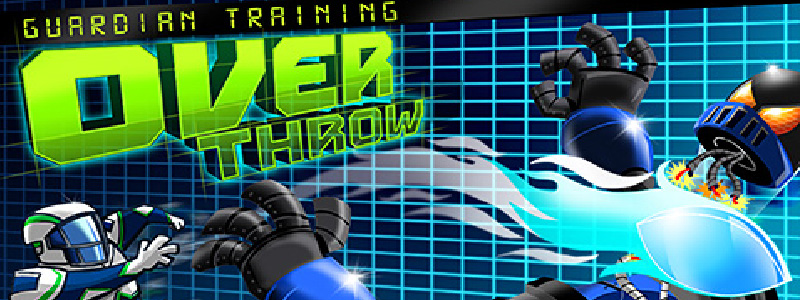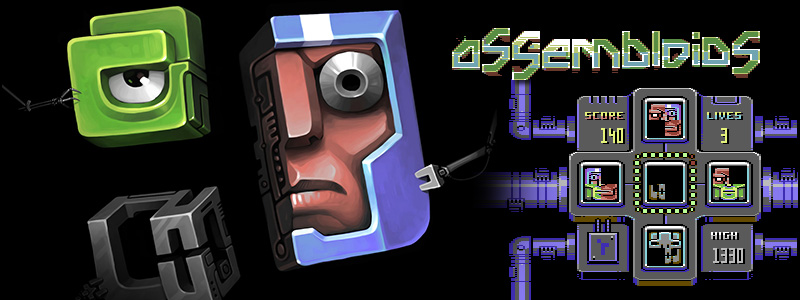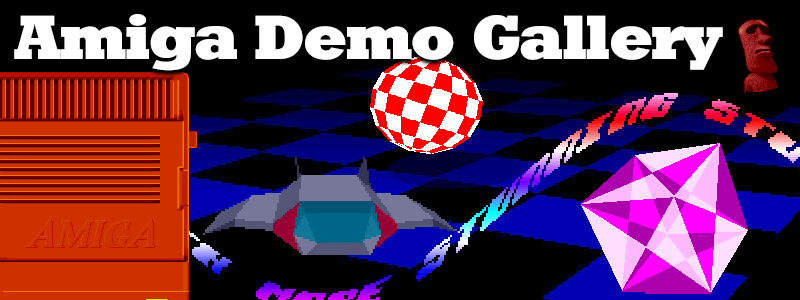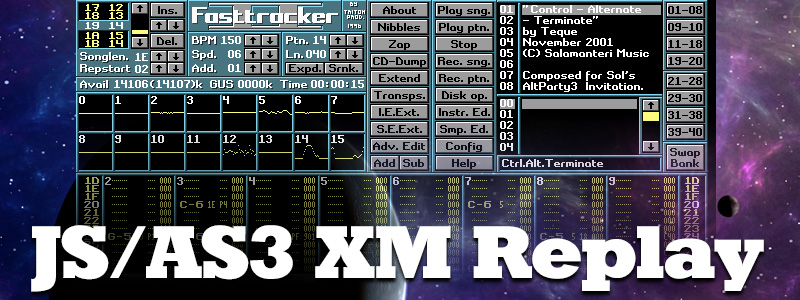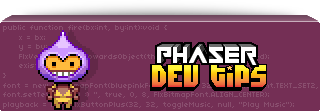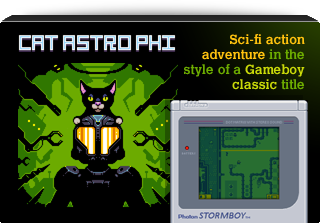Latest Posts
-
Off to the beach we go …
28th Sep 20080Everything is packed, all the tickets are in order, and very soon I’ll be heading off to sunny Brighton for 3 days of intense Flash on the Beach.
My only concern is that lots of the sessions I want to attend overlap each other!
For example I’d love to hear Joa Ebert speak about Audiotool, but I’d also like to hear Grant Skinner talk about general AS3 (they clash). Keith Peters also clashes with Rob Bateman 🙁 but the one I’m most upset about is that Andre Michelle clashes with what sounds like a fascinating session on SWF decompilation. That’s a topic I’m extremely interested in, but Andre is an ActionScript God, so I don’t doubt he’ll impart some excellent advice during his session.
Damn it, I wish I could clone myself! 🙂
Anyway if you’re there (or possibly even there already if you’re at the workshops!) then “Hi!” I’ll be there with two other Aardman dudes, and much enjoyment and learning shall ensue. I’ll post a report when I return next week as I don’t intend taking any hardware with me – I’m going to let my brain soak it all up and give my typing fingers a rest.
-
PixelBlitz – Optimised RenderLayer part 1
19th Sep 2008
Tonight I updated the PixelBlitz Engine with a small but significant feature. I attacked the issue of redundant redrawing of elements, and updated both the PixelSprite and RenderLayer classes so they no longer refresh all of their content if nothing has actually changed since the last render call.
Sounds simple and it is, but it makes a world of difference to the speed of things.
I’ve been researching how beneficial adding a dirty rect system in the engine would be. The problem I have is that it’s all dependant on the type of game. For example a vertical shooter, with a scrolling background and bullets flying everywhere, would have no benefit at all – if anything the extra calculations may even slow it down. But in a sedate game, especially one with large (overlapping) objects, it could be a dream.
So, still in two minds really – perhaps it’s something we allow the user to disable at will.
For now I’m going to optimise the 2DRenderer further by making it only copyPixels() from the area of the RenderLayer that has changed. At the moment it grabs a full sized layer even if the layer only contains say a 64×64 sprite somewhere.
Anyway until then the new code is available in svn.
-
Is “Pixel Blitting” in AS3 really worth the effort?
19th Sep 2008While planning some new routines for the PixelBlitz engine tonight one thing struck me – is it actually worth it?
There are a number of articles across the web about pixel blitting in AS3 (most of them at 8-bit Rocket 🙂 but I did wonder if anyone had actually done some tests to see just what difference it makes in real-world terms.
After all, why mess around “blitting” things about if using a Sprite or MovieClip is just as fast anyway? Infact you could easily argue that using a native Flash display object gives you far more control (as you get to play with scaling, alpha, rotation, animation, sound events and more, easily).
Another thing also struck me – when building up the display for render the AVM will automatically use a dirty rectangles system. If you’ve got two overlapping movieclips then it won’t waste time drawing pixels that would otherwise be obscured by the one in front. Traditional blitting on the other hand doesn’t care about this, it’ll gleefully copyPixel() until the cows come home, pasting image after image on-top of each other (PixelBlitz suffers from this issue too).
[ Side note: It’s true we could add a similar dirty rectangles system to Pixel Blitz, to avoid copying data when it’s guaranteed to be overwritten further up the chain – but this is not something we’ve found a fast way to do yet (the potential alpha channel of a bitmap causing the most problems), the overhead of sorting and checking for overlaps is always taking longer than just brute-force copying everything each time (if you can help, email me!) ]
Tonight I decided to write two simple tests. They would measure the speed of the AVMs dirty rectangle system vs. raw bitmapdata copypixel power. I was interested in 3 things – the overall time it took to run the test, the amount of memory it used and the average fps rate.
The Tests
I took a 550 x 400 sized stage published at 30 fps. All tests were run using the Debug version of the Player (9.0 r 124). The test consisted of creating an array of X number of sprites (to test the AVM) and PixelSprites (to test blitting). Each sprite was 50×50 in size and contained an alpha channel. I then drew all of the sprites onto the stage and moved them along by 4 pixels per frame, if they hit the left of the stage they wrapped around to the right again. The Sprites had cacheAsBitmap set to true (see note below)
Then I ran the tests multiple times, with varying numbers of fish, for varying durations, recording the data at each step and averaging it out.
I agree that this is in no way a truly “scientific” test, but I wanted a general “feeling” as a result, to see if this was an avenue still worth walking down or not.
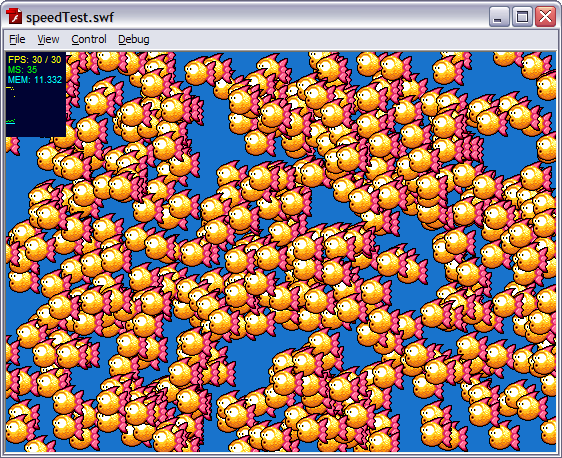
The Results
With 500 sprites both the standard Sprite and the blit method kept a solid 30 fps frame rate. Using Sprites consumed 15MB of RAM, using blits 11MB.
At 1000 sprites we’re still at a consistent 30 fps, but there is noticeable “tearing” in the visuals as the sprites move across the stage. It’s not terrible, but you can easily see it. The standard method is now using 20MB while the blit is using 14MB.
2500 sprites and we see both techniques struggle to keep-up with the 30 fps rate. The traditional Sprites actually outpace the blitting at 23 fps vs 21 fps, but the memory consumption is more than doubled, 35MB vs. 15MB.
At 5000 sprites they are both starting to feel the strain, each level pegging at 12 fps. But the standard Sprites technique is using a staggering 58MB, while the blit is only up to 20MB.
7,500 sprites all moving at once and both techiques are virtually bought to their knees managing just 8 fps each. Given the amount of data moving this isn’t totally surprising. The blit technique at this point is literally copying 18.7 million pixels around in memory. The AVMs internal dirty rectangle is feeling the full force of what’s going on however, and is now consuming 237MB of RAM vs. the blit techniques 25MB.
10,000 sprites crashes the Debug player for both versions, it literally runs out of memory 🙂
cacheAsBitmap
As I mentioned at the start, the Sprite version had cacheAsBitmap set to true. This is the main cause of the huge amount of RAM being used. As our Sprite only contained a single Bitmap this wasn’t needed. By removing this setting the amount of RAM used dropped, ending up only a few MB higher than the straight blit method.
Our Findings
So what can we pull from this?
First of all, the AVM dirty rectangles implementation is pretty damn sweet! But brute-force blitting is equally as fast in this test case. Logic tells us that adding redraw aware optimisation to our blit engine should increase this gap in our favour significantly.
NEVER enable cacheAsBitmap on a Sprite or MovieClip if all it contains is bitmap data.
The blit engine uses less memory. If you need to cache vector Sprites in your game, then it uses considerably less memory!
No-one really needs a game with 7,500 fish swimming around in it 😉
Maybe the test wasn’t “real world” enough – even at the 1000 sprite level (at which both methods kept a 30 fps frame rate) we were still moving 2.5 million pixels around a 550 x 400 stage. That’s enough to fill the stage 11 times over (and still have some spare). Is this likely in a real game? Well no, I don’t believe so – but it isn’t that far off either. Games are getting bigger (we published one at 800×600 today for example), and if you had a game featuring multiple layers going on (foreground, player, background, distance, etc) with alpha showing through them all, then it doesn’t take long to start using pixels in the millions range.
There are instances when I believe it’s just easier to deal with things on a blit level – for example building up a large n-way scrolling tilemap, where you constantly need to redraw the scroll buffers. Doing the same by placing (and updating) hundreds of Sprites would be an exercise in pain I wouldn’t wish on anyone.
Is a combination of both worlds the way to go? Quite possibly. While I loathe using the timeline (or Movieclips in general) for anything, they do offer Flash animators a rich featured tool-set that let’s them create vibrant moving games. Whereas the blit method requires graphic artists trained in the way of the pixel, and I believe those are a dying (and expensive) breed indeed. Creating quality animations at that level is time-consuming and costly. But as we’ve seen, animating on a vector level introduces both resource and speed issues into your game.
What about collision detection? Well we all know this pretty much sucks in Flash. So we have to roll our own methods anyway. For pixel perfect collision detection we need to inspect the elements on a pixel level (surprise surprise), at least with the blit technique we’re already operating on that level, so there’s no extra draw() overhead involved.
Conclusion
Are AS3 Sprites “evil” for those of you trying to create arcade style games? No, I don’t believe so. They can hold their own in the speed stakes thanks to the power of the AVM, but you do have to watch yourself and be very careful re: memory consumption.
Is “blitting” really that much faster the using normal Sprites? No, it isn’t. It does have less memory overhead and a “cleaner” feel to it, but it’s no speed demon in comparison.
Would a hybrid solution work? (i.e. a fully blitted tilemap with Movieclips characters on-top) – yes, absolutely!
Don’t feel that because you have travelled down the “blit” route you need to have the whole game living there. If you can mix and match your game logic and most importantly your collision systems, then there’s no harm in splitting these elements up, using both at once.
P.S. If you’ve got some ideas or concepts on optimising blit level drawing, please get in touch. I’ve been reading a lot about this recently (what I can find at least) but it’s always good to pick someone’s brain.
-
BlitzMouse right-click capture example
16th Sep 2008sergej wrote a comment to my BlitzMouse post saying that if you right-clicked the custom pointer gets lost until the page is refreshed. Here is some simple code to work around this.
In your main SWF make sure you import ContextMenu and ContextMenuEvent. Then add 2 new global vars:
[as]
private var rightClickContext:ContextMenu;
private var contextOpen:Boolean;
[/as]and within your init (or constructor) add this:
[as]
rightClickContext = new ContextMenu();
this.contextMenu = rightClickContext;
rightClickContext.addEventListener(ContextMenuEvent.MENU_SELECT, contextMenuOpen, false, 0, true);
[/as]“this” is a Sprite in this case, but any valid display object (that has access to the contextMenu) will do. The “contextMenuOpen” function is literally just the following:
[as]
private function contextMenuOpen(event:ContextMenuEvent):void
{
contextOpen = true;
}
[/as]and finally, in your main game loop, just check the state of this var and reset accordingly:
[as]
if (contextOpen && mouse.isDown)
{
mouse.hide();
}
[/as]When the context menu is opened (by a right-click on Windows) it fires the ContextMenuEvent.MENU_SELECT event, which we capture and set a boolean for accordingly. While the menu is open we can do nothing about the standard mouse pointer, but in our main loop we can listen out for a mouse click (mouse.isDown) and then hide the pointer again accordingly.
I’ve not tested this on a Mac (where you can command-click to get the context menu up) so if anyone reading can do so, please let me know if it works.
The SWF below should allow you access to the context menu, but upon clicking the SWF again the custom pointer should return (assuming you click within the limit zone!)
[swfobj src=”http://sandbox.photonstorm.com/blitzMouseTest2.swf” width=”550″ height=”400″]
-
BlitzMouse Released + Demo
15th Sep 2008After working my butt-off on my latest game I decided it was time to redirect some love and attention to PixelBlitz. So this weekend I finished off a new class I had planned out a while ago. Introducing… BlitzMouse! This pairs up with BlitzKeyboard to complete the input set, and is a feature rich (and very fast) mouse handling system.
Here’s a very simple demo of it in action:
[swfobj src=”http://sandbox.photonstorm.com/blitzMouseTest2.swf” width=”550″ height=”400″]
Press the cursor keys to limit custom mouse pointer movement.
So what can this bad boy do? The aim (as with all things PixelBlitz) is to make working with the mouse in your games easier. Here’s a quick overview of the core features:
Accurate mouse tracking
Keep an eye on that rodent! Easily check if it has left the stage, or re-entered again. Doesn’t use any CPU time processing events that require the mouse if it’s not over the stage!
Button / Click handling
Detect when the mouse button is down, or up.. or being held down. Find out how long it took the user to make that last mouse click (the speed from down to up again). Find out how many clicks the user has made since you last checked. Writing those god-awful “Ninja Finger” style games has never been so simple 😉
Mouse stats
Want to know if the mouse is moving up? Just check isMovingUp! You can poll all 4 directions easily and quickly. Want to know how far in pixels the mouse has travelled on the X axis? Call distanceX() – want to know how fast it moved? Call speedX!
Rotation
To know which angle the mouse is at call angle(), and you can have the result back in degrees or radians. Use the optional “lowerAccuracy” parameter and it uses a much faster calculation, but sacrifice a little accuracy in the process (great for a quick arcade game, not-so for a physics simulation).
You can set the point of the angle calculation (it defaults to the centre of your stage), which allows you to track the angle from anywhere to the mouse. You can even get the angle from any display object to the mouse using angleToObject() (with all the same parameters that angle() supports). This means if you want 3 things all pointing right at the mouse then it’s no problem! (see the demo above) Want to know the distance from any display object to the mouse? Call distanceToObject() and it’ll tell you.
Custom Mouse Pointers
Use changePointer() and you can set the mouse pointer to any display object – with custom X/Y offset support incase the pointer needs aligning differently to the standard top left. As the mouse moves, the display object is updated. If the mouse leaves the stage the display object is made invisible, so you don’t get that “cursor stuck on the edge” problem 🙂
Movement Limits
Want to limit the movement of the custom pointer? No problem! You can limit it in all four directions (up/down/left/right) with optional snapBack support on both axis. For example if you were making a Pong game (please… don’t) by just calling limitMovement(true, true, false, false) you will lock the bat into only moving up and down with left/right movements ignored.
Want to limit the mouse to a specific area of the stage? Call limit(new Rectangle(x,y,w,h)) – if the mouse goes outside of this zone it will be hidden from view. You can see this in the example above as it hides when it leaves the light grey box. This limit also effects custom pointers. Of course when the mouse leaves the stage there is nothing you can do about that – but we have to work within the limits of Flash here 🙂
So there we have it – BlitzMouse! Hopefully more useful than you thought when you first read the title, aye? 🙂 I plan to add more features, such as custom events/function calls on mouse actions, the ability to attach as many display objects as you like to it (so they all update at once) and custom zones, so you can have as many “mouse zones” as you want. The code is uploaded to Google, so enjoy 🙂
More posts to tickle your grey matter ...
- Phaser Coding Tips 5
- Phaser Coding Tips 4
- Phaser 3 Development Log - w/e 30 Jan
- Phaser Coding Tips 3
- Phaser 3 Development Log - w/e 16th Jan
- Phaser Coding Tips 2
- Phaser Coding Tips 1
- Phaser v2.1.3 and Pixi v2 are out!
- Welcome to the DarkForge - An archive of all my old DarkBASIC code
- Phaser goes to the movies
Hire Us
All about Photon Storm and our
HTML5 game development services
Recent Posts
OurGames
Filter our Content
- ActionScript3
- Art
- Cool Links
- Demoscene
- Flash Game Dev Tips
- Game Development
- Gaming
- Geek Shopping
- HTML5
- In the Media
- Phaser
- Phaser 3
- Projects
Brain Food



